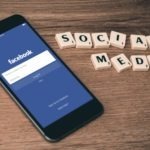Mergers of major corporations are nothing new to the marketplace. Those that succeed can forever change the landscape of our day-to-day lives. That is Microsoft’s vision and the reason for their purchase of LinkedIn for $26.2 billion. Such a large and expensive acquisition by the tech titan isn’t simply to obtain yet another piece of the market, but rather to revolutionize it.
LinkedIn’s goals, back in 2014, included producing a profile for every company and worker in the world, presenting every skill set on its platform and providing online tools to develop every skill set for each member. If you take a look at LinkedIn’s current site, you’ll see that the company is in fact on track to make those goals a reality. It has over 500 million members worldwide, offering tools to further develop skills and providing resources for different sectors of the marketplace, including nonprofits.
In December of 2016, when the nation was swept up in a divisive presidential campaign, Microsoft and LinkedIn decided to join forces and combine their products in order to take over the professional digital marketplace. Everything from social selling to Microsoft Office may eventually be embedded under this one behemoth. What does this mean for nonprofits?
Let’s think about how easy it is for members on LinkedIn to connect and let’s consider why they connect in the first place. These links take place for common purposes—whether professional, developmental or philanthropic. Nonprofits on LinkedIn are able to demonstrate their values, updates and feature their staff. With great ease, LinkedIn members can locate subject matter experts, find an institution or group they are affiliated with, read their post and share it accordingly. The speed with which specific organizational knowledge is shared among peers is significant.
The acquisition allows Microsoft to leverage these distinctive attributes with their Office Suite products. And the value to nonprofits in outreach to donors and members could expand exponentially. The company itself is putting a lot of resources into this section of the marketplace. It currently has a section called LinkedIn for Nonprofits, where tools are available for recruiting employees, volunteers and donors, while offering webinar tutorials.
Nonprofit Board members and administrators will want their organization to be a part of Microsoft’s vision to reach members and drive engagement. The level of time, energy and money that nonprofits decide to put into the platform is entirely up to them, but it’s a decision that their donors and members will take notice of.




